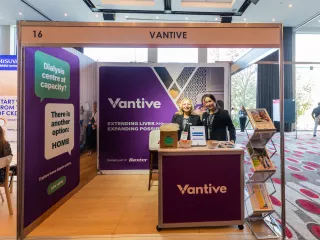Reflections on the 2025 RSA Conference

Written by Lisa Richardson, Senior Product Manager
Key conference takeaways
Some key takeaways from the RSA conference include:
- PD guidelines are critical for ensuring standardised, best practice care. But there is still quite some work to be undertaken to ensure that guidelines are implemented in all renal units in a timely manner whilst overcoming barriers such as training gaps, resource limitations, and clinician perceptions.1
- The Initiating Dialysis Early and Late (IDEAL) study2 is challenging some hypotheses around the timing of dialysis initiation, suggesting that early initiation is not associated with improvements in survival or clinical outcomes, and offering a potential saving to the Australian and New Zealand health systems of up to $84 million per year.1,2
- A hybrid PD-HD model that has been trialled at Mid Central Renal Unit in NZ could be a game-changer for extending the time patients can stay on PD – on average patients supplementing their PD regime with one HD session per week were able to stay on PD for an additional 8.6 months, preserving their quality of life and reducing the need for in-centre HD.3
- A study of nocturnal HD patients at Middlemore Hospital demonstrated clinical and quality of life benefits for patients of a longer and slower treatment. Clinical benefits included reduced hospitalisations, improved patient stability (including cardiac function), better uremic toxin clearance, and reduced medication use. Patients also reported functional improvements such as less fatigue, improved sleep patterns and the resumption of normal activities after moving to nocturnal dialysis.4
The conference presentations demonstrated there is tremendous potential to improve kidney care and address systemic issues in the provision of care.
Congratulations to the RSA award winners
Fantastic recognition to Purple House on providing dialysis services to remote communities across the NT, WA and SA, including some of our most vulnerable patients. And congratulations to the RSA award winners:
Katrina Baxter – RSA Health Equity Award
Asha Blessan – RSA Dedication to Practice Advancement & Innovation
Jodie Ridley – RSA Patient First Award
Auckland Renal Service – RSA Patient First Award
Rajeev Kumar – The RSA Award
Kerry Linton – RSA Leader Award
References
-
Professor Josephine Chow, Deputy Director Research at SWSLHD and Chair ISPD Standards & Guidelines Committee - Peritoneal Dialysis Practice Guidelines : The Good, the Bad and the Ugly
-
Cooper, BA, et al, The Initiating Dialysis Early and Late (IDEAL) study: study rationale and design, Perit Dial Int, Mar-Apr 2004
-
Morgan Park, Renal Clinical Nurse Specialist, Mid Central Renal Unit – Initiation of Hybrid PD-HD at Mid Central Renal Unit : A quality initiative project
-
Celestine Rodrigues, Clinical Renal Physiologist, Middlemore Hospital – Nocturnal Dialysis with Outstanding Quality
